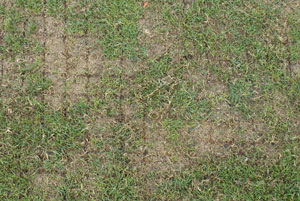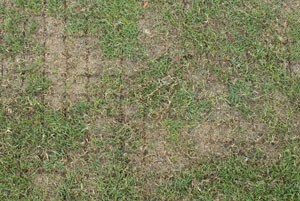
29 Apr Slit Seeding Why and How?
 An Uncommon Technique Produces Spectacular Results
An Uncommon Technique Produces Spectacular Results
Your home is no doubt the centerpiece of your property — the art in and of itself — so think of your lawn as the frame to this piece of art.
And with any art, you want your frame to enhance it, not detract from it.
Thus, special attention must be given to your lawn, and particularly in this region, as we’ve witnessed unusually harsh winters and hot summers in recent years (most people don’t realize, but we live in an area that experiences among the most extreme weather changes on earth).
So if you’re planting a new lawn, do it right! And one of the most effective ways to guarantee a lush and healthy lawn is slit seeding.
Slit seeding utilizes a special machine (a slit seeder) that literally slits the ground and drops seeds in the cracks to give them deeper contact with the soil, ensures better growth, and protects from the elements, birds and other animals (a good rule of thumb when seeding is to ‘feed the soil, not the birds.’)
“Most people aren’t aware of slit seeding,” said Ralph Dinizo, President of Truesdale Nursery & Landscape Services of Berkeley Heights, N.J., one of the state’s premier lawn care specialists. “But it’s a process that works even better than sod, and is less expensive. We recommend this to all our customers looking to install a brand new lawn or renovate a lawn with problems.”
When to Use a Slit Seeder
When seeding a lawn, it’s very important to plant grass seeds directly in the soil. Most plots of ground have a “thatch” sitting on top of the soil, consisting of dead leaves, plants and other organic matter. If the grass seed is sown in the thatch rather than the soil, it will indeed germinate, but it will be weak.
Slit seeders have discs that actually slice into the ground, and have additional equipment to then drop grass seeds into the resulting furrows. They eliminate some of the work and ensure better grass-growing success.
How to Use a Slit Seeder
Prepare your soil for grass seeding by removing any weeds, trash or rocks in the way. Your new grass seeds will grow best if there’s no competition, so you want a clear area.
Then measure the amount of land you’re seeding, then calculate how much grass seed you need (consult the packaging or your local lawn care professional). Fill your slit seeder with your first load of grass seed, and walk the seeder in a straight line from one end of the lawn to the other. The seeder will sew grass seeds in rows with 2 to 6 inches of distance between them.
Once you’ve done the whole lawn, reseed, walking crossways, until there’s a row of grass seed in each square inch. Water the lawn well when you’ve finished.
“We’ve found that homeowners who slit seeded their lawn generally take more pride in the proper care going forward,” added Dinizo. “This process seems to give the homeowner a truly vested interest and a real sense of accomplishment.”
Where Do I Get Help If I Need It?
There are a multitude of resources on the Internet. And of course your local lawn care professional is just a phone call away. Truesdale is here to help. Contact us today.


